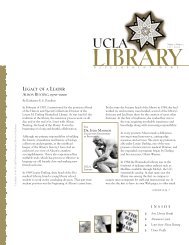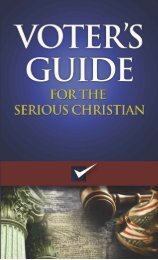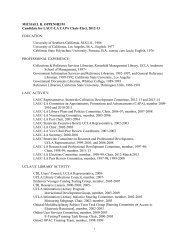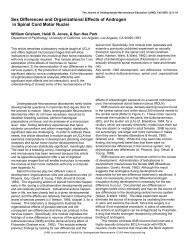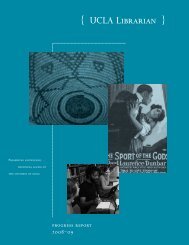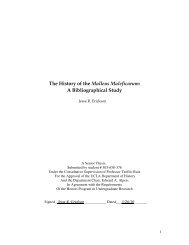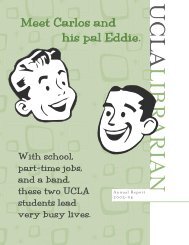Research Paper - UCLA Library
Research Paper - UCLA Library
Research Paper - UCLA Library
Create successful ePaper yourself
Turn your PDF publications into a flip-book with our unique Google optimized e-Paper software.
–ss at the end. In this way, Shakespeare and Fletcher’s version of that period of history deviates<br />
Gu 30<br />
from fact and chooses instead to anachronistically insert later praise of Elizabeth’s virginity and<br />
female attributes into the christening scene. The “princes” that Cranmer speaks of not only<br />
anticipates James I, but also serves as an assurance of a patriarchal status quo in the monarchs to<br />
come. By stating that “all that shall succeed” the virgin queen shall be princes, the playwrights<br />
portray a future filled with male rulers; despite all the virtues that Cranmer piles on the queen,<br />
the virgin queen is assumed to be an anomaly in a world commanded by men.<br />
As the speech continues, this emphasis on male successors moves specifically to James<br />
and the famous “maiden phoenix” metaphor. The phoenix was one of Elizabeth’s emblems<br />
throughout her reign. First used in two oil paintings by Nicholas Hilliard (c. 1572-6), “[The<br />
emblem is] concerned with the nature of rulership… [It emphasizes] the uniqueness and sanctity<br />
of Elizabeth’s government and her care for her people” (Strong, Gloriana 82). A creature from<br />
mythology, the phoenix complemented the Queen’s status as an object of worship, a fairy queen.<br />
However, the phoenix emblem also revealed an underlying desire for an heir to the throne. As a<br />
symbol of regeneration, the phoenix “was above all a vehicle rich in dynastic mysticism<br />
asserting the perpetuity of hereditary kingship and royal dignity” (Strong, Gloriana 82). Similar<br />
to the idea of the eternal body politic which transfers over to the next ordained ruler when the<br />
body natural expires, the phoenix trope represents the transference of kingly authority from a<br />
monarch to his successor. Consequently, it may come as no surprise that “references to James as<br />
a phoenix rising from Elizabeth’s ashes figure more frequently in accession commemorations<br />
than any other topos” (Watkins 17). As a foreign king not directly descended from his<br />
predecessor, James, like Elizabeth before him, needed to assert his legitimacy as heir to the<br />
throne. Henry Hooke preached a sermon before the new English king shortly after his accession,



